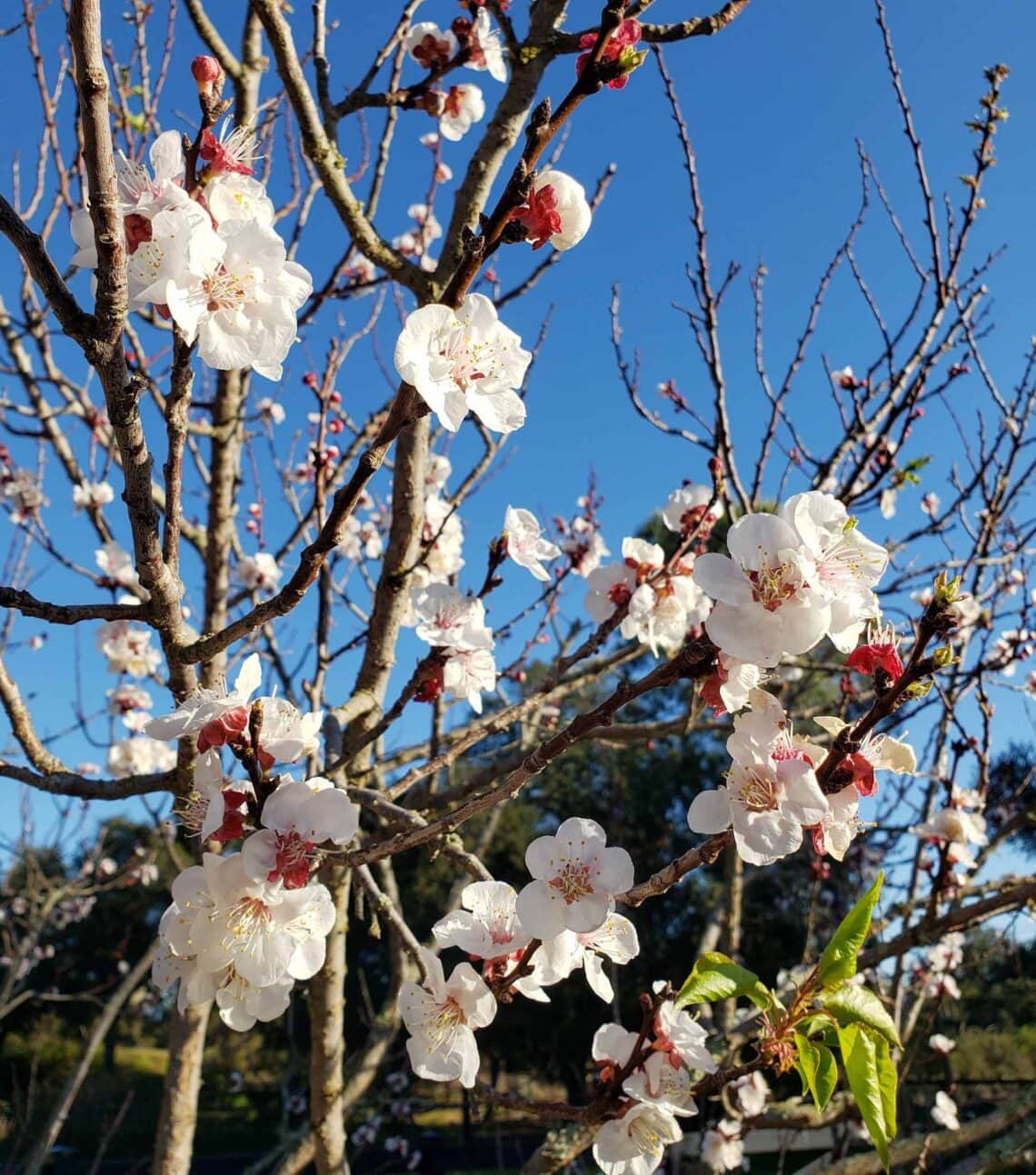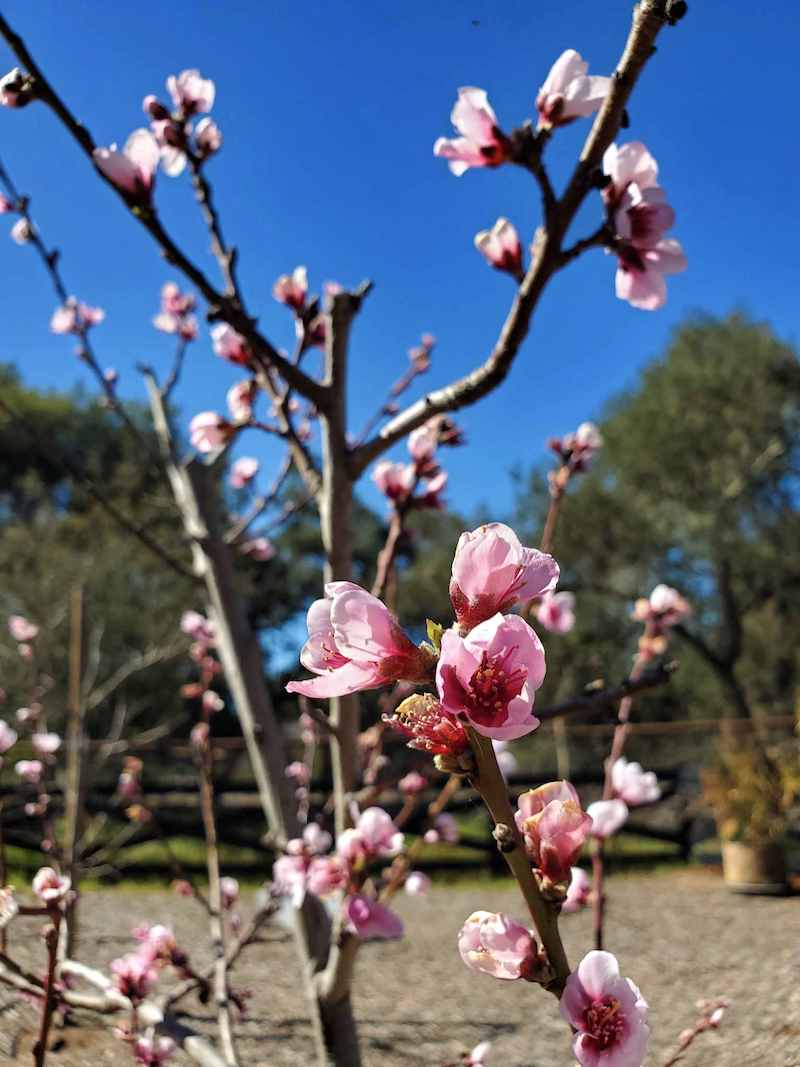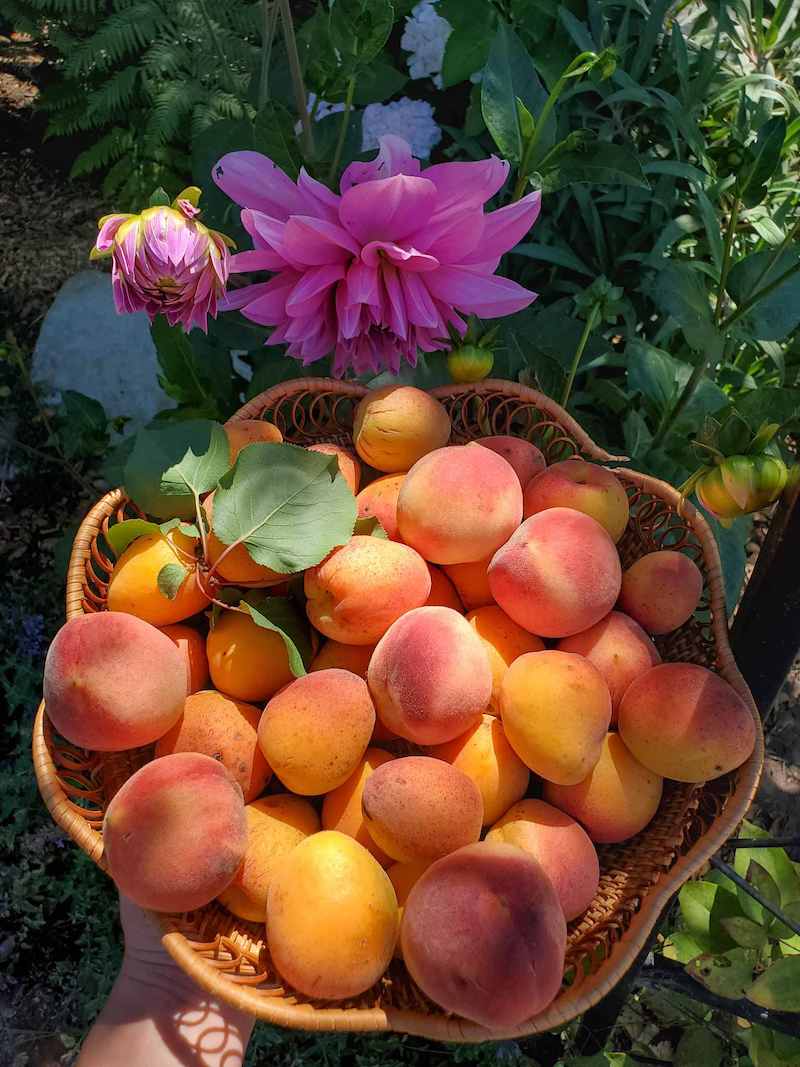
What Are Fruit Tree Chill Hours? Helpful Charts + Area Maps
As a gardener, it’s important to understand chill hours, especially if you’re growing fruit trees. After all, selecting a fruit tree variety with the wrong chilling hour requirements for your area can lead to lackluster fruit production – or no fruit at all! So read along to learn about chill hours, including why they’re important, which trees need them, and how to find the number of chill hours in your area.
I’ve also included some general tips on selecting fruit trees (like, don’t forget the cross-pollinators!) and a handy chill hour chart for dozens of popular fruit tree varieties at the end of this post.
What are chill hours?
In the world of horticulture, chill hours refer to the total number of hours between 32 and 45°F that an area receives on average each winter. Denoted as “CU” (chill units), chill hours are essential for certain plants to break dormancy and set fruit come spring.
Chill hours don’t need to be consecutive. Rather, chill hours are noted as the cumulative total hours in that temperature range occurring between November and March. Hours below 32°F don’t count. And for every day that reaches over 60°F, one half-hour of chilling hours is subtracted from the total.
It’s crucial to pay attention to chill hours when selecting fruit trees for your garden. If not, you may spend precious time, money and energy tending to a tree that will never bear fruit for you! For instance, a fruit tree that needs 800 chill hours will not produce fruit if planted somewhere that only receives 500 chill hours. Read the tag or description of the tree; it will tell you how many chill hours it needs!
Chill hours are different from cold hardiness, which is the lowest temperature that a tree or plant can tolerate without dying.

Why do trees need chill hours?
Scientists still don’t fully understand the physiological changes that occur in trees in response to chilling hours. What is known is that cold temperatures trigger a hormonal response that allows buds to develop into viable flowers and future fruit once the weather begins to warm up again. Without adequate chill hours, the fruit tree’s flower buds may not bloom in spring, or the flowers may open unevenly – resulting in lesser, late, or no fruit production at all. Leaf growth may also be interrupted or delayed.
Fruit trees aside, many other plants rely on cold temperatures to grow well too. Blueberries, kiwis, garlic, echinacea, native milkweed, tulips, nut trees and other deciduous trees – just to name a few. You may also hear this referred to as “vernalization” or “cold stratification” (which are two slightly different things, but similar concepts).

What types of fruit trees require chill hours?
Most fruit trees require some chill hours in order to bear fruit. Peaches, plums, nectarines, apples, figs, cherries, apricots, persimmons, pears, pomegranates, and more. Aside from a chilling requirement, these fruit trees all have something else in common: they are deciduous, or lose their leaves over winter. On the other hand, avocado, citrus and mango trees (some of the few evergreen fruit trees) do not require chilling hours at all.
Among those listed above, apples, pears, and stone fruit are notorious for needing the greatest number of chill hours, while persimmons, figs, and pomegranates require the least overall. However, the number of chill hours needed varies greatly depending on the cultivar – even among the same type of fruit tree!
Take apples for example. Most apple varieties need between 500 to 1000 chill hours. Ever-popular Gala apples require around 500 chill hours. Golden Delicious needs 600-700. Red Delicious needs up to 800 hours or greater. Yet there are several varieties of apples that only need 200-300 chill hours (such as Anna or Golden Dorsett) making those a great choice for mild climate gardeners.
As you start to look around, you’ll see there are fruit tree varieties with chilling requirements suitable for every climate or growing zone!

How to find how many chill hours my area receives?
There are a lot of resources available online to help you find the number of chill hours in your area. See the map below for a general idea. I’ve also put together a list of a few chill hour lookup tools below, but you can usually find the answer with a quick Google search for your town or county too!

Chill hour lookup tools:
- California Chill Calculator from UC Davis
- AgroClimate Southeast Chill Hour Map (Florida and Georgia)
- Texas Chill Hour Map
- Another great option is this map lookup tool. First zoom in to your area, and copy or jot down the name or code for the nearest weather station to you. For example, ours is E8214 (though some are all letters). Then, enter that weather station ID number in this “Get Chill” database to see how many chill hours your area accumulates!
- You can also click on various sections of this national chill hour map to zoom into specific states and localities.
- I’ve found that these tools provide slightly different results for our area, so I like to check several to compare and average them.
Choosing Fruit Trees for Your Area
When choosing fruit trees, be sure to select varieties that need the same number or fewer chill hours than your area receives. For example, our area gets an average of 400 chill hours, so we’d want to select varieties that need 400 hours or less. That’s not to say varieties with low chilling requirements can’t be grown in areas that receive more though! Many varieties are well-adapted to both mild and colder climates. But generally speaking, the higher the chill hours needed, the more cold-hardy the variety is. That said, be sure to choose trees that are compatible with your hardiness zone!
Keep in mind that average chill hours are reported. Meaning, some years may accumulate more or less chill hours depending on the weather that particular winter. Therefore, it’s wise to plant a variety of cultivars with a range of chilling requirements to offset odd years.
Yet if you have limited growing space, play it safe by selecting fruit trees with chill hours needs well below your average to help ensure a good crop despite a slightly warmer winter. In our area, that would mean planting fruit tree varieties that only require 100-300 chilling hours (as opposed to the full 400).
If possible, buy trees from local nurseries. In addition to the perk of supporting a local business, they’ll most likely carry fruit tree varieties that are well-suited for your climate. The staff is usually quite knowledgeable and willing to provide guidance as well! Otherwise, Fast Growing Trees and Nature Hills Nursery are two reputable online tree retailers.

Don’t forget a cross-pollinator!
Many fruit trees need a partner tree nearby for cross-pollination and to set fruit, including most apples, pears, plums, sweet cherries, and avocados. Two trees are considered a good match for cross-pollination based on their pollen type and when their flowers bloom. Most often, it is a second variety of the same type of tree (e.g. a Fuji apple and a Pink Lady apple).
Some trees may be described as self-fruitful, self-fertile, or self-pollinating. This means they will produce decent fruit without a cross-pollination partner nearby. However, most “self-fertile” trees often produce an even more bountiful harvest (in both size and quality) if a partner tree is provided! Refer to the description for the fruit tree variety you’re interested in for more specific pointers.
The important work of fruit tree cross-pollination is usually mostly done by bees, though the wind and other pollinators can play a small role too. To cross-pollenize, bees can carry pollen quite a distance! A neighbor’s tree several blocks away may help to pollinate a tree in your yard. However, it’s recommended to keep partner trees within 100 feet or closer for the best pollination results.

Popular Fruit Tree Varieties & Chill Hour Requirements


And that concludes this lesson on fruit tree chill hour requirements.
I hope this was helpful, and that you learned something new. (I actually learned a few new facts myself, which is always fun!) Now comes the hardest part: narrowing down your choices! Once you you’ve selected a few new fruit trees for your garden, be sure to pop over to our Tree Planting Guide; it’s full of tips for success. Feel free to ask any questions in the comments below. Also please consider pinning or sharing this post if you found it useful. Thank you for tuning in!
You may also like:
- How to Grow Pineapple Guava (Feijoa): Cold-Hardy Tropical Fruit
- Growing Avocados: Varieties, Climate, Planting & Care
- 20 Awesome Avocado Varieties (Type A & Type B Avocados)
- How to Grow Fig Trees
- 18 Fantastic Fig Tree Varieties to Grow at Home
- How to Grow Purple Passion Fruit and Maypops








4 Comments
Jennifer
Hi there. I loved reading your article about chill hours, but it frankly left me a little depressed toward the end… your fruit is so CLEAN and perfect looking, where mine always ends up looking “dirty” and spotted. If I didn’t personally know how delicious my own apples tasted, I’d be afraid to eat them! I actually have to scrub them with a cloth and water before giving any to neighbors. And there’s no scrubbing a peach or nectarine. What’s your secret?
DeannaCat
Hey there! Oh no, I am sad to hear this left you feeling down… certainly not the goal, nor is “perfect” fruit! All that matters is that they taste good, in my humble opinion. And don’t worry, the birds peck and eat a good portion of our peaches and apples, so…. Lol. And as far as “spots” go (as you’re talking about ones that can wash off)?, perhaps you get some summer rain or overhead sprinklers that leads them to getting spotty/dirty water marks on them? We don’t get any rain here except during winter, so while our fruit gets plenty dusty, it stays there in an even coating. Thank you for reading, and enjoy that homegrown fruit – spots and all!
Nathaly
Hello Deanna.
I really admire your work and your beautiful garden. I have learned a lot from you.
I live in south Florida and I was wondering how to grow a couple of fruit trees were I live. Since we don’t have chill hours I was wondering what fruit trees I can grow in my area beside avocado and citrus.
Currently I have a meter lemon tree which is giving me a lot of fruits and I have papaya trees and an Australian finger lime tree which I haven’t get any fruits yet. Which make me wonder if my climate is good enough to have a finger lime tree. I have it on the ground and gets a lot of sun, it has grow a lot since I planted. But no fruits yet.
Thank you for all the articles you write and for being an inspiration for first time gardeners like me.
Regards
Nathaly
Aaron (Mr. DeannaCat)
Hello Nathaly, what part of Florida are you in and do you not get any chill hours for your area? It looks like even the southern tip of Florida may still get 0-50 chill hours. To see what fruit trees work best in your area, visit local nurseries and see what fruit trees they are offering for sale, they should be the correct fruit trees for your growing zone. As far as your finger lime tree, depending on its age and size, it can take a number of years before it bears fruit. It is also native to Australia so I am sure you are in a good climate for the tree, it may just need time to fruit. As long as it is growing and looking healthy, that is all I would be concerned with right now. Hope that helps and have fun growing.